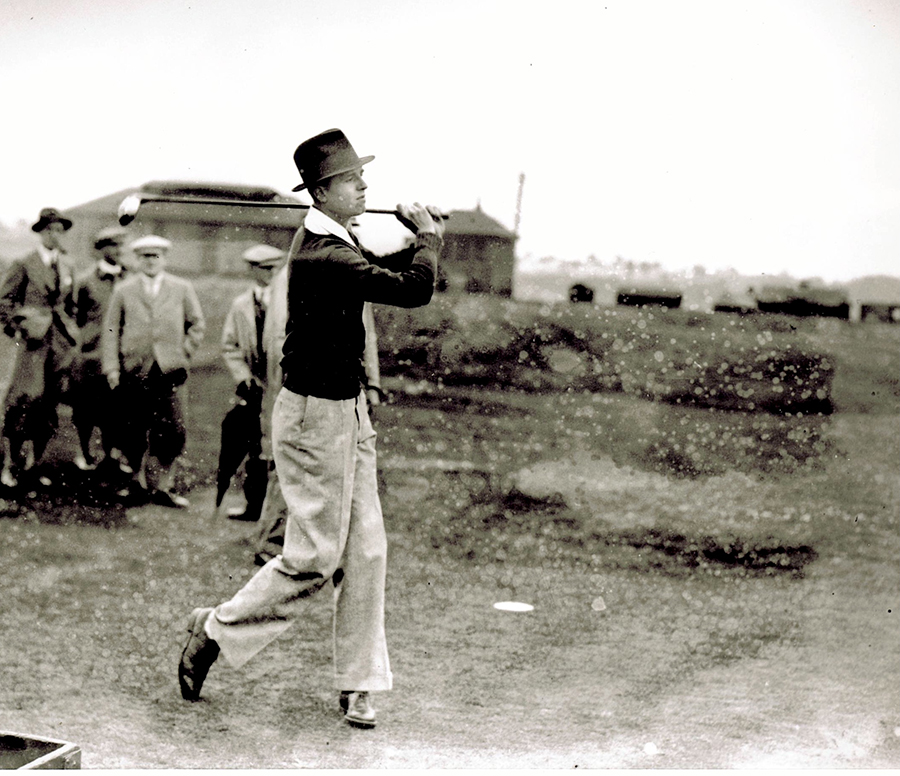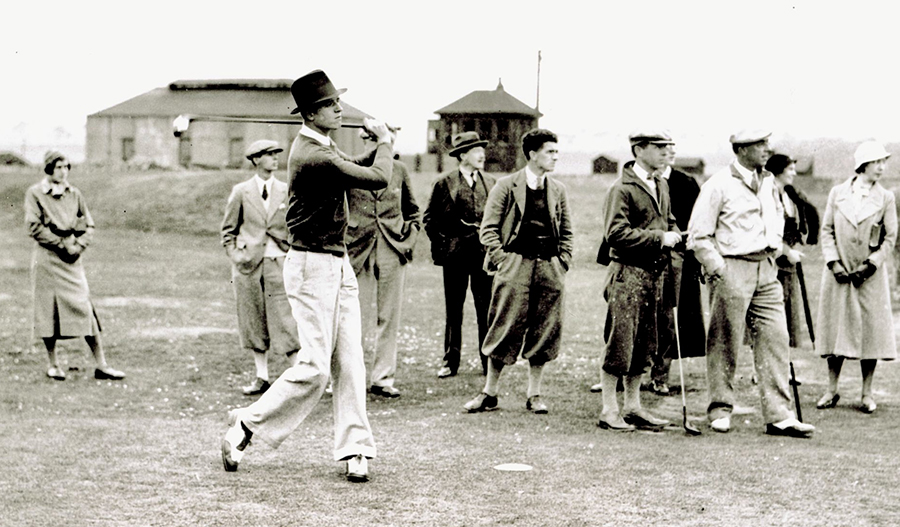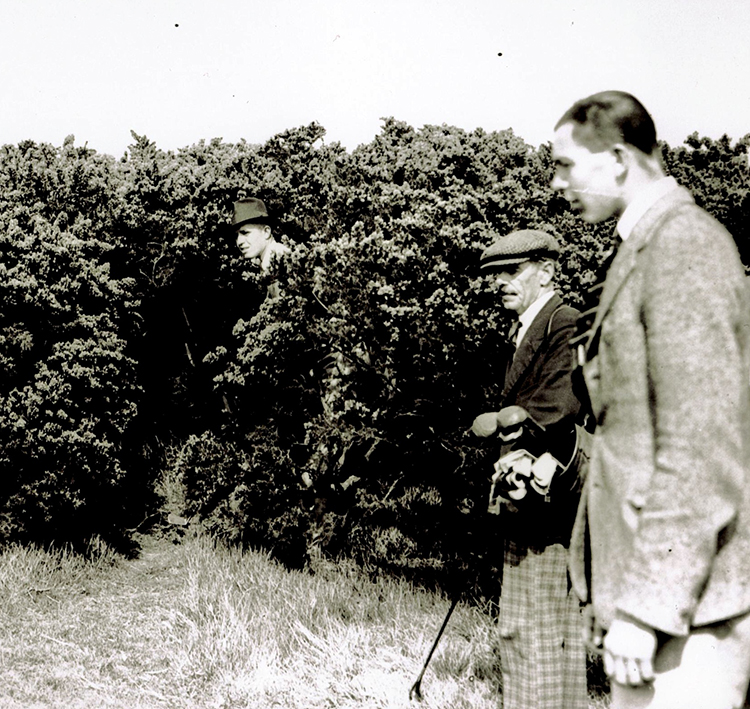A firsthand account by John Fischer Jr.
The Open Championship celebrates its 150th playing this year, happily on the Old Course at St Andrews. The following account of playing the Old Course is courtesy of John Fischer III who writes:
I thought the attached article my dad wrote after he returned from the 1934 Walker Cup at St. Andrews with his impressions of the course might be of interest to those of our members who’ve played the Old Course and also those who haven’t, which was the original audience. It appeared in one of the four Cincinnati newspaper dailies, but I’m not sure which. My grandmother pasted it in an album but, unfortunately, she carefully trimmed off the date and name of the paper. The three photos below are of my dad at St. Andrews practicing for the Walker Cup. In all photos, he’s wearing a fedora hat. The weather turned very windy and wet for the actual match, and he wore a cap. I think the article succinctly describes the atmosphere and the course.
ST. ANDREWS COURSE ELUSIVE, WALKER CUP PLAYER ATTESTS
By John W. Fischer, Jnr. (member, 1934 U.S. Walker Cup Team)
For most golfers, St. Andrews is the home of golf. A tradition has been built up around the course that cannot be found elsewhere, and members of the Walker Cup team felt that. The atmosphere of the town itself is one of golf. The clubmakers shops, such as Tom Morris’s, Tom Stewart’s, Willie Auchterlonie’s, and W. Forman’s, dating back 100 years or more, are prominent.
In the evening the large putting green near the “Royal and Ancient” is crowded by players of all ages, from child to grandmother, and it is a common occurrence to meet numerous people on the streets carrying golf clubs. Most Scotsmen, including officials, students, and shopkeepers, are proficient at the game and I would place the average score to be 80 or 85, in comparison with the American average of 100.

To the younger members of the 1934 Walker Cup team visiting St. Andrews for the first time, the “old course” provided a unique experience. We heard tales of its peculiarities and deception, but all concerns were wiped away with our first view of the large, smooth double-greens and wide parallel fairways with finely cut turf. Our youthful enthusiasm and confidence were unbounded, and we were out to conquer the course.
After a few holes, however, we realized that the task was not going to be accomplished so easily. The wide fairways were studded with small box-like traps and sand dunes that demanded a knowledge of their location, because they could not be seen from the tee. The greens were almost shaven clean, leaving a firm, hard base that was difficult to pitch to. Besides this, a damp, variable breeze made the course still more provoking.

Our period of “learning” was almost unceasing, every day brought new conditions and experiences. However, when the Walker Cup matches were played two weeks after our arrival we felt we knew the course. We were mistaken. A storm blew in from the sea the day of the singles matches completely altering conditions.
In two weeks no Walker Cup player scored better than 71, and Denny Shute won the British Open in 1933 with four rounds of 73. Such is St. Andrews – it always has another surprise awaiting the unsuspecting golfer. This quality coupled with a mockery and defiance of successful rounds, in spite of evident playing shortness must be the reason for the Scotsmen saying the course “grows” on you.
All our early confidence remained undiminished throughout, but when we left, the “old course” at St. Andrews was still unconquered.

